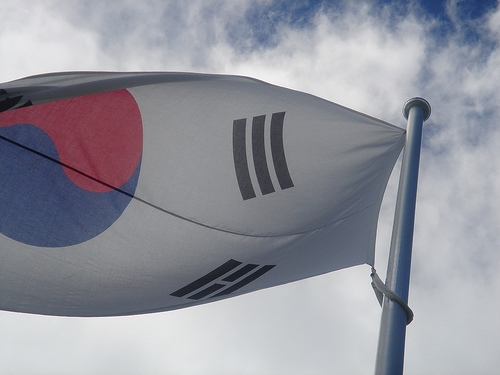
Korea's export growth to rebound to 2% in October
Steady economic growth underway.
According to DBS, Korea's trade data may show a rebound in export growth to 2% YoY in October from -1.5% in September, as revealed by the preliminary trade figures for the first 20 days.
Here's more from DBS:
Incoming data for Sep/Oct are expected to paint a picture of steady growth and low inflation. We had expected a pullback of -0.3% MoM sa in September industrial production following the strong rise of 1.8% in August.
Given the better-than-expected 3Q GDP released last week, upside surprises to September IP appear likely. Meanwhile, the trade data may show a rebound in export growth to 2% YoY in October from -1.5% in September, as revealed by the preliminary trade figures for the first 20 days.
On the other hand, inflation is projected to remain low at 0.9% YoY in October thanks to the recent fall in oil prices.
Exports and domestic demand should benefit from the stabilization of the Chinese economy and the correction of global oil prices. With the US’s QE tapering having been postponed, capital inflows have also increased and sentiment has improved.
The KRW appreciated 1.3% month to date and once broke the 1060 level last week, not only due to the weak dollar, but also due to Korea’s positive economic data and the BOK’s recent move towards internationalizing the KRW (the BOK signed three bilateral currency swaps in October respectively with Indonesia, UAE and Malaysia, worth a total of KRW 21.5trn).
There is plenty of room to boost the international use of the KRW. As a percentage of Korea’s exports and imports, the percentage of using KRW as the settlement currency is very low currently, at 1.9% and 3.5%.
While policymakers intend to promote KRW globalization in the long run and accept greater flexibility in the exchange rate, they would remain alert to the short-term FX volatility caused by hot money flows.
Last week both the BOK and the finance ministry stepped up verbal warnings against the “excessive” and “one-way” rise in the KRW.
Based on the past experiences, inspections on banks’ and corporates’ external position and FX borrowings would follow as the next step of intervention, if hot money inflows continue to increase.
























 Advertise
Advertise






